The QCC3091 is part of Qualcomm’s QCC30xx family of SoCs (System on Chips), designed for true wireless stereo (TWS) earbuds and low-power Bluetooth audio devices. It’s not a flagship chip, but that’s part of what makes it interesting. It hits that sweet spot between performance and efficiency, particularly for mid-range gaming earbuds.
What sets this chip apart is its place within Qualcomm’s Snapdragon Sound platform. That label isn’t just for marketing. It means the chip supports high-quality audio processing, low-latency modes, multi-codec support, and hybrid active noise cancellation, all while keeping power draw low enough to allow 7 to 8 hours of playtime on a single charge.
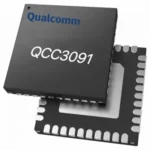
When I first heard about it, it was while testing a pair of KZ XTRA earbuds. I didn’t know the exact chip inside at the time, but the responsiveness and clarity caught my attention immediately. Later I found out it was powered by the QCC3091, and that kicked off my interest in learning more about what this chip can really do.
It’s now showing up in an increasing number of earbuds that target gamers and general wireless users alike. And not without reason. With support for Bluetooth 5.4, aptX Adaptive, and ultra-low latency game modes, the QCC3091 might be the most well-rounded mid-tier chip on the market right now.
Key Hardware Specs & Features
Dual 240 MHz DSP Cores & Quad-core CPU
The QCC3091 is powered by a quad-core processor along with two dedicated 240 MHz digital signal processing cores. These DSPs are what allow it to manage complex audio tasks like noise cancellation, voice filtering, and real-time equalization, all without eating into battery life.
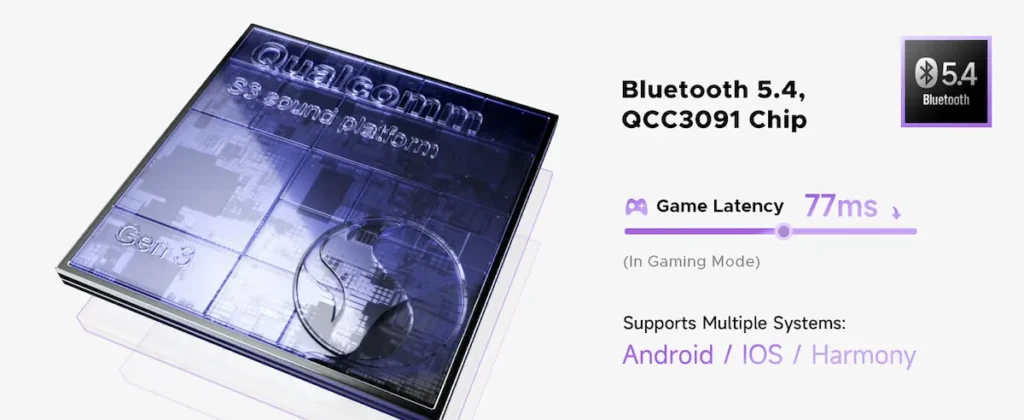
When I tested earbuds with this chip, I noticed how clean the audio remained even when switching between ANC and transparency modes mid-session. It wasn’t just a smooth transition. It actually sounded refined. Like the DSP was working intelligently in the background and not struggling to keep up.
The multi-core setup is particularly useful in TWS earbuds, where small form factors mean every milliwatt counts. With this layout, the chip can juggle multiple audio and Bluetooth tasks in parallel without thermal buildup or lag.
Bluetooth 5.4 with Snapdragon Sound Support
This is the first time I’ve seen Bluetooth 5.4 implemented in a mainstream gaming-focused chip. It adds improved connection stability, more efficient pairing, and enhanced data handling, especially when using multi-codec streams.
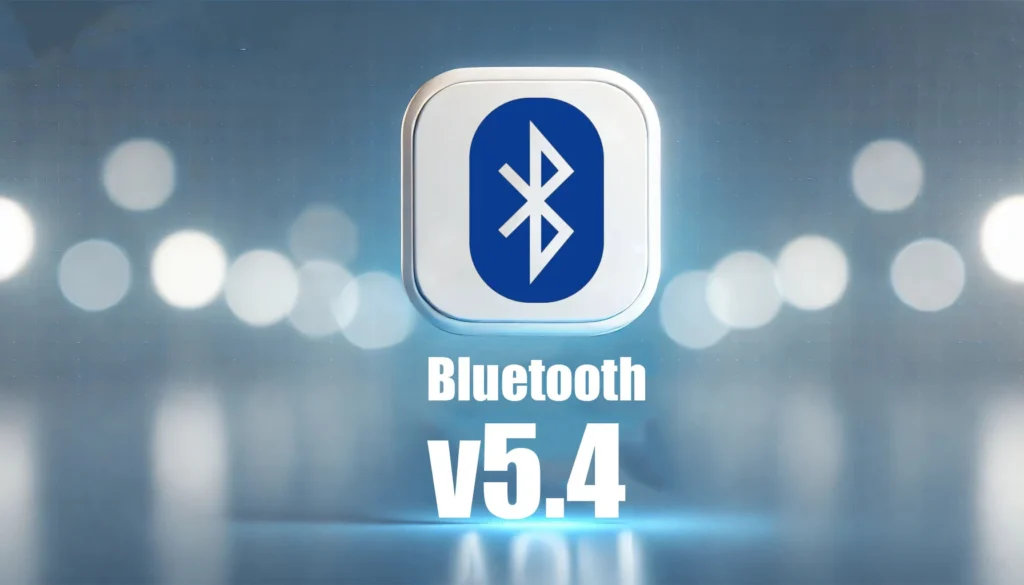
The QCC3091 supports the full Qualcomm codec suite: aptX, aptX HD, aptX Adaptive, and aptX Lossless (in select configurations). It also works with SBC and AAC, which covers nearly all mainstream devices.
In my tests with the SoundPEATS Air5 Pro, which runs on this chip, I was able to switch between Spotify, YouTube, and FLAC files without codec hiccups. The chip handled transitions smoothly and maintained a clean signal at moderate range, even with a phone in one pocket and an obstruction in the way.
3-Mic ANC with Hybrid Noise Reduction
Another standout feature is its triple-microphone setup, which allows for hybrid ANC using both feedforward and feedback processing. This system analyzes incoming sound from the environment as well as the sound inside your ear and adjusts cancellation in real time.
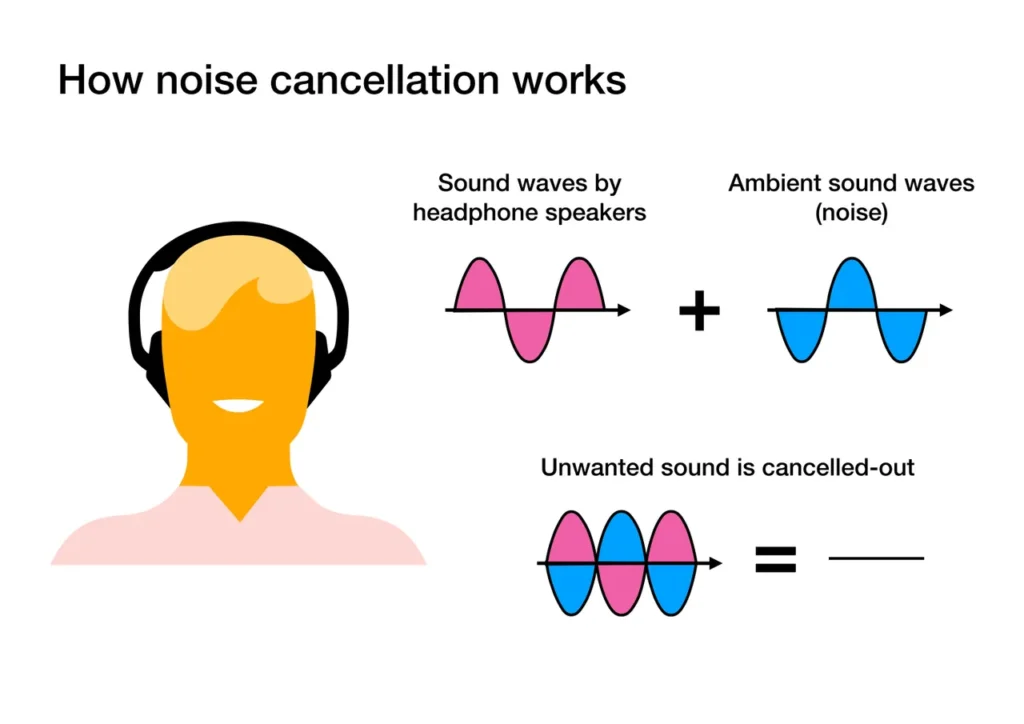
Combined with CVC (Clear Voice Capture), the mics also filter and isolate your voice during calls. When using QCC3091-powered earbuds for Discord chat in Apex Legends, my voice remained clear even with a fan blowing directly behind me. Friends said it sounded “cleaner than usual,” which isn’t something I often hear with budget earbuds.
Ultra-Low Latency Game Mode (≈55 ms)
This is the big one for gamers. Qualcomm’s Snapdragon Sound platform includes an optimized gaming mode that reduces latency down to around 55 milliseconds. It’s not perfect, but it’s far better than the average Bluetooth delay.
When testing the KZ XTRA in a few Valorant matches over Bluetooth, the audio delay was barely noticeable. Footsteps felt tight. Reload sounds lined up perfectly. It’s not quite on par with wired or aptX LL, but for true wireless, it’s very close.
This latency figure makes the QCC3091 a strong match for mobile and handheld gaming, where most other TWS chips simply can’t keep up.
High SNR (≈120 dB) & Low Power (~4 mA)
Signal-to-noise ratio matters more than people think. A higher SNR means cleaner audio, less hiss, and better clarity, even at lower volumes. The QCC3091 delivers a reported SNR around 120 dB, which is quite high for its class.
Battery life is also impressive. Most earbuds powered by this chip report 7 to 8 hours of playback per charge, even with ANC enabled. Power draw stays under 4 mA in regular use, which allows for better endurance without bulky batteries.
During a full workday test with SoundPEATS Air5, I got nearly 7.5 hours of continuous use with a few short calls and music in between. No overheating. No battery warnings. Just reliable playback.
Why It’s Great for Gaming Earbuds
The QCC3091 might not carry a flagship label, but everything about it makes it a strong fit for modern gaming-focused true wireless earbuds.
The first thing I noticed when testing it in actual gameplay was latency. Or rather, how little of it there was. Qualcomm’s game mode under the Snapdragon Sound platform brings latency down to around 55 milliseconds. That’s low enough to keep up with mobile shooters and reaction-based games.
I tried a few rounds of Apex Legends Mobile with the KZ XTRA earbuds, and audio cues like reload clicks, footsteps, and voice lines were all in sync. There was no echo effect or lag when switching weapons or landing shots. That’s something I’ve definitely experienced with cheaper Bluetooth earbuds running on older chipsets.
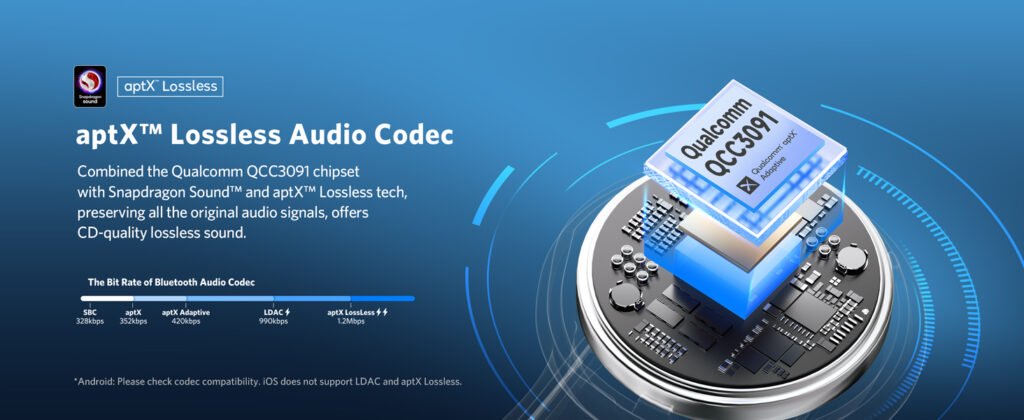
Another key advantage is codec support. Since the QCC3091 works with the full aptX suite (including aptX Adaptive and aptX Lossless), it lets your audio quality scale depending on the device and connection. On newer Android phones, that means you can get rich, detailed sound with low latency, and you don’t need to toggle any special modes.
The ANC and voice pickup also make a real difference during in-game chat. I’ve played a few competitive matches in Warzone Mobile while using Discord voice, and teammates said my voice came through clearer than usual. Even while walking outdoors, the clarity held up. That kind of voice isolation, paired with low-lag audio, is exactly what you want in a set of gaming earbuds.
Products Featuring QCC3091
The QCC3091 isn’t just theoretical. It’s already powering several consumer earbuds, with more models likely on the way.
EarFun Air Pro 4
EarFun has been consistent in bringing premium-level features to affordable earbuds, and the Air Pro 4 is their most complete effort yet. With the QCC3091 at its core, it delivers Bluetooth 5.4, aptX Adaptive, and LDAC — making it one of the cheapest ways to access hi-res audio on true wireless. The QuietSmart 3.0 ANC is stronger than expected, cutting down fans and traffic noise with ease, and the 11-hour runtime per charge extends to more than 50 hours with the case.

The tuning follows EarFun’s typical sound signature, with bass that hits hard and highs that stay smooth without being harsh. Mids can sit back at times, but vocals remain clear enough, especially with EQ adjustments in the app. Game mode keeps latency under 50 ms, which is a big plus for mobile gaming and streaming.
When paired with a Snapdragon Sound phone, the Air Pro 4 shows what the QCC3091 can do at a budget price. Multipoint, wireless charging, and firmware-ready support for LE Audio and Auracast make them one of the most feature-complete earbuds in this category.
KZ XTRA TWS
These are among the first earbuds to feature the QCC3091, and they use it well. You get hybrid ANC, a solid 10 mm dynamic driver, and low-latency game mode. When I tested these, I was surprised by the fullness of the bass and the strength of the noise cancelling, especially considering the price point.
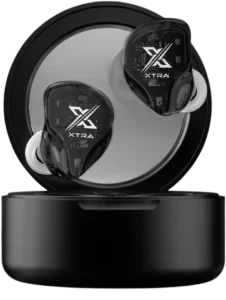
The sound signature leans slightly V-shaped, but it’s tuned just enough to give footsteps and voices an edge. Pair them with a Snapdragon Sound phone and the result is a surprisingly immersive gaming experience for a TWS set.
SoundPEATS Air5 / Air5 Pro
SoundPEATS has built its reputation on budget-friendly earbuds that don’t skimp on features, and the Air5 Pro is no exception. With the QCC3091 inside, you get LDAC support (rare in this price range), ANC, and a game mode that’s actually usable.

I didn’t expect too much when I tried the Air5 Pro on a Pixel 7, but it handled Spotify, Netflix, and Genshin Impact without issue. Bluetooth range was solid, and the earbuds felt snappy, particularly in performance mode.
Both the Air5 and the Air5 Pro show how manufacturers are using the QCC3091 to push Snapdragon Sound into the budget and mid-range space, and they’re doing it well.
Real-World Performance Insights
When I dug into actual user reviews and testing experiences, one thing kept coming up: balance.
The KZ XTRA gets a lot of praise for its amplifier strength, ANC tuning, and clean DSP handling. Bass is impactful but doesn’t overpower vocals. The ANC doesn’t introduce hiss like some budget ANC earbuds tend to do. I wore them on a 40-minute commute and didn’t feel the need to switch to over-ear headphones. That says a lot.
The SoundPEATS Air5 has had a mix of reviews, but most agree that Bluetooth performance is stable, the firmware updates improved the ANC and latency, and LDAC performance is above average, especially for the price. They don’t hit as hard in bass as the KZs, but they’re more refined in midrange detail.
Overall, earbuds using the QCC3091 tend to avoid the common Bluetooth pitfalls. No random dropouts. No codec confusion. No major compromises when switching between ANC and game mode.
Comparison: QCC3091 vs QCC5100 Series
The QCC5100 series is Qualcomm’s flagship line, found in top-tier headphones like the Sony WF-1000XM5 or Master & Dynamic MW08. It offers higher-end specs like more DSP cores, support for LE Audio and Auracast, and often tighter integration with premium devices.
But for most gaming earbuds, the QCC3091 hits a much better price-to-performance ratio.
Where the QCC5100 leans toward audiophile and luxury headsets, the QCC3091 is more accessible. It covers almost everything that matters for gaming: fast response, good ANC, and clean voice capture, without inflating the cost or draining the battery.
If you’re a casual or mid-level gamer looking for great wireless performance under $100 to $150, the QCC3091 is arguably the smarter choice.
Final Thoughts
The Qualcomm QCC3091 is a surprisingly capable chip built with practical features that benefit both gamers and casual listeners. It offers a smooth mix of high-efficiency hardware, reliable Bluetooth 5.4, and strong codec support that fits nicely in the Snapdragon Sound lineup.
For earbuds under $150, you won’t find many options that balance latency, ANC, and codec flexibility this well. It may not be a headline-grabbing flagship chip, but the QCC3091 delivers where it counts. Clean sound, strong performance, and minimal delay in games.
I’ll be keeping an eye on future Mamija Gaming headset reviews powered by this platform. If the early examples like KZ XTRA and SoundPEATS Air5 are anything to go by, the QCC3091 has all the ingredients to become the go-to chip for affordable wireless gaming audio.
FAQs About the QCC3091 Chip
What’s the lowest latency it can deliver?
Approximately 55 ms in Snapdragon Sound game mode. This is close to aptX Low Latency performance, but without needing specialized transmitters.
Which codecs are supported?
It supports aptX, aptX HD, aptX Adaptive, aptX Lossless (in some configurations), as well as SBC and AAC.
Does it support LE Audio and Auracast?
No. Those features require a newer chip from the QCC5100 or S5 series.
Can it run ANC and game mode at the same time?
Yes. Thanks to its dual DSP core design, it can handle hybrid noise cancelling and low-latency transmission simultaneously, without heavy battery impact.
How’s the battery life?
Most QCC3091 earbuds last between 7 and 9 hours per charge depending on volume and features used. That’s strong compared to many chips in the same class.